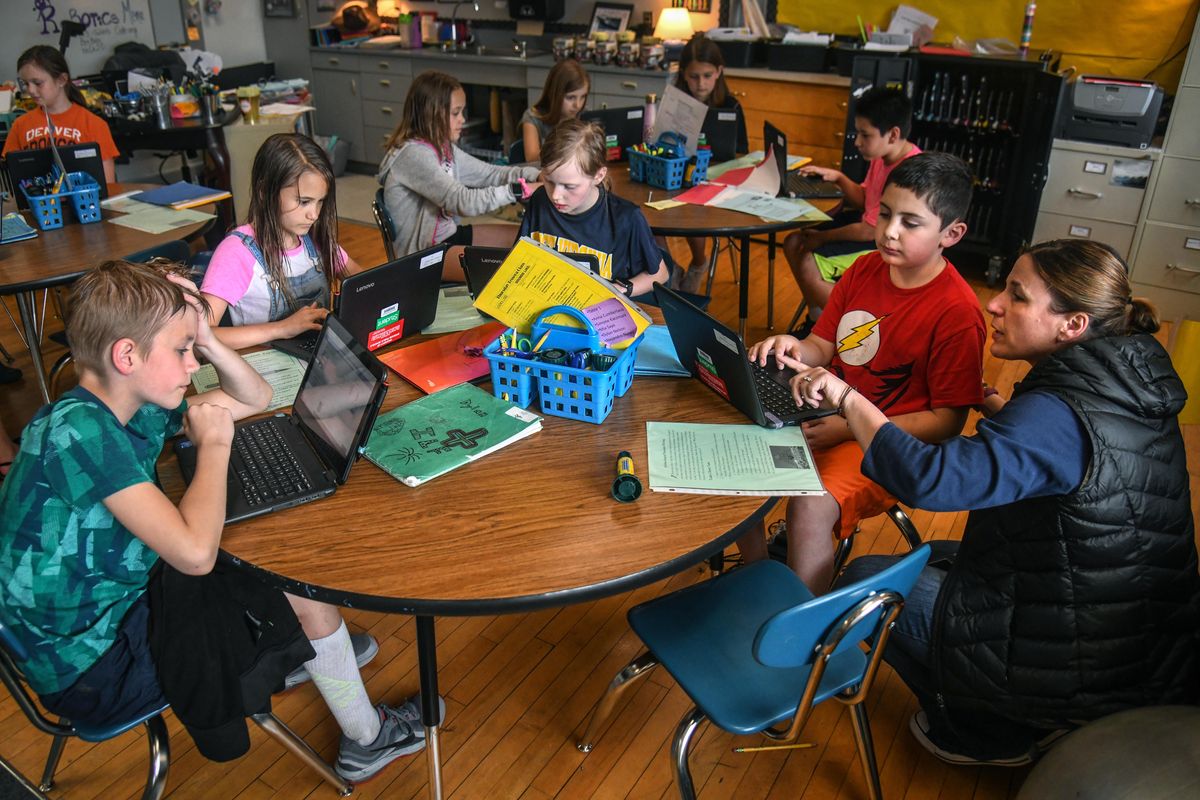School district making changes to ensure poor students have better chance at gifted school

Spokane Public Schools plans to have a better system next year to find and enroll students for its gifted and talented program.
In Spokane and the rest of the nation, many bright children never get the chance to shine. Especially those at schools in poorer neighborhoods.
The reasons are many – parental indifference and ignorance, lack of access to quality preschools, uneven testing and identification by teachers and schools, and a narrow definition of the word “gifted.”
The numbers are glaring, though perhaps not surprising.
Of the 275 students enrolled this year in Tessera – a one-day-per-week program at the Libby Center for highly capable students from throughout the school district in the third through sixth grade – 131 come from six upper South Hill elementary schools: Hutton (38), Moran Prairie (22), Jefferson (19), Mullan Road (19), Hamblen (18), and Wilson (15).
In contrast to the 131 students from the six upper South Hill schools participating in the Tessera program, just 26 students in the program are from the nine elementary schools located east of Division Street and north of Interstate 90.
None of those six South Hill schools has more than 43 percent participation in free- and reduced-price lunch programs. By comparison, the district-wide average is 57 percent participation.
This “disproportionality” earned the attention of the school board last week as Heather Bybee, the district’s director of K-12 curriculum, and Debra DeWitt, principal of the Libby Center, provided details of a new plan ensure all students are given a fair chance at the gifted program.
“It’s saying something that one certain section of town is going to that school,” board member Brian Newberry said during the meeting.
The changes, which were unanimously approved by the board, are a response to a report conducted last fall that cited identified critical shortcomings in the district’s programs for the “highly capable,” as they’re known in the district.
The district has voted to improve, based on the idea that gifted children can be found at Holmes Elementary as well as Hutton – if only they get the chance.
National studies have shown that disparities in gifted education have been attributed to “lower social and financial capital,” which may give minority families “less access to information about identification processes or to private psychologists or others who can test them for giftedness outside of school.”
In an 84-page report released in January by national experts Virginia Burney and Kristie Speirs Neumeister, the district was lauded for offering a wide variety of programs for the highly capable.
The biggest are Odyssey (a full-day, every-day program for fourth- through eighth-grade students) and Tessera.
Other options include Montessori, APPLE and the seventh- and eighth-grade Institute of Science and Technology at North Central that may also be appealing for families of highly capable students.
The problem, according to the report, is the lack of clear information allowing parents and students to find the right fit. Moreover, some elementary schools do a better job than others at informing parents.
“We need to do a better job of communicating,” Bybee said.
The work is already beginning, according to Bybee and Adam Swinyard, the district’s chief academic officer.
For those students already identified the district is pursuing several strategies including better social and emotional skills learning in preparation for high school; project-based learning every quarter; introduction of the International Baccalaureate program for Odyssey students; and more opportunities for gifted students who choose to remain at their neighborhood school.
At the same time, the district is trying to learn from its mistakes.
In Spokane and elsewhere, the critical tool for early identification of gifted students is the Cogitive Abilities Test, or CoGat, which is administered to each second-grader in the district.
Those who score in the top 10 percent in a screening test are then given the full battery of the CoGat, a universal test cited by experts as reducing disproportionality.
The version used in Spokane is among the best, DeWitt told the board after talking with researchers Burney and Speirs.
However, the district has moved from paper-and-pencil testing to online testing, which has been shown to yield lower test scores for students less familiar with computers.
According to the report from Burney and Speirs, some stakeholders believed that online testing at the second-grade level is yielding results less valid than the old paper-and-pencil format.
Swinyard said Wednesday that the district plans to “do some piloting in the fall,” following up with students who previously took the online test and sampling how those numbers compared with their results using paper and pencil.
Apart from the CoGat, the district relies on other indicators – interim assessments and tests, along with teacher referrals.
At the same time, Bybee noted anecdotal evidence that some schools have been less than diligent in identifying potential candidates.
Bybee said the district will “review and revise the identification process to have more representative distribution.”
“We are trying to isolate the variables and educate families, especially on the north side, about what this opportunity is all about,” said Bybee.
On a practical level that means making sure that parents are aware of gifted learning opportunities through handouts and online links.
Bybee hopes for a day when gifted isn’t identified mainly by test scores in math and language arts.
“There are other ways to be gifted, in terms of creativity and leadership, and areas that we haven’t ventured into yet,” Bybee said.